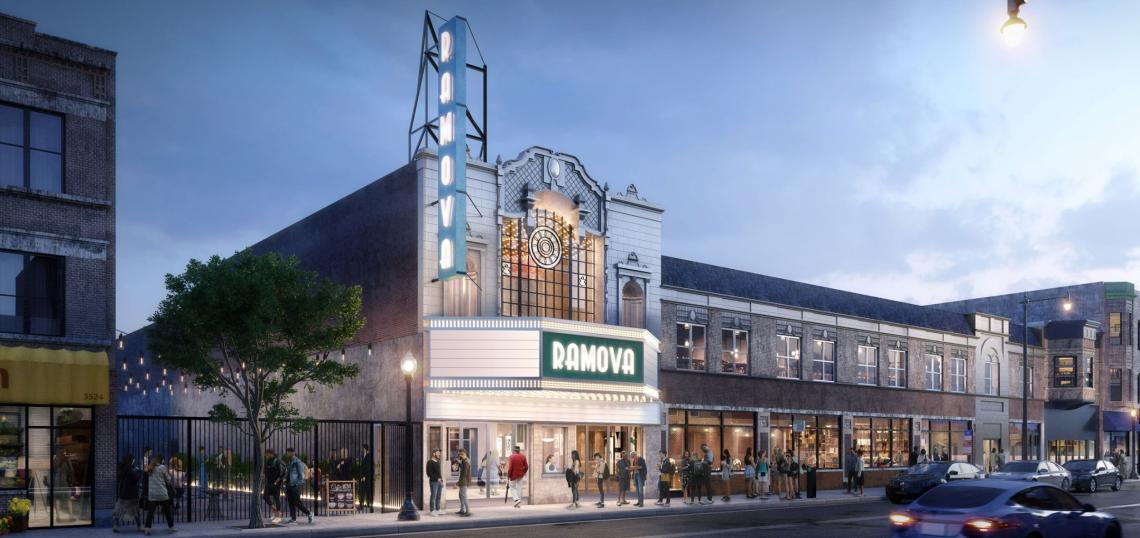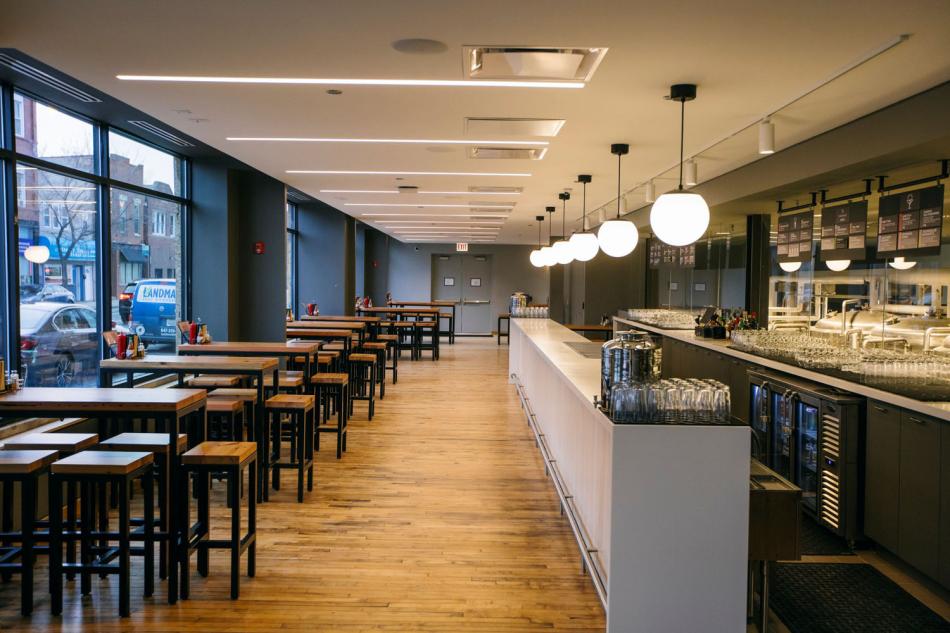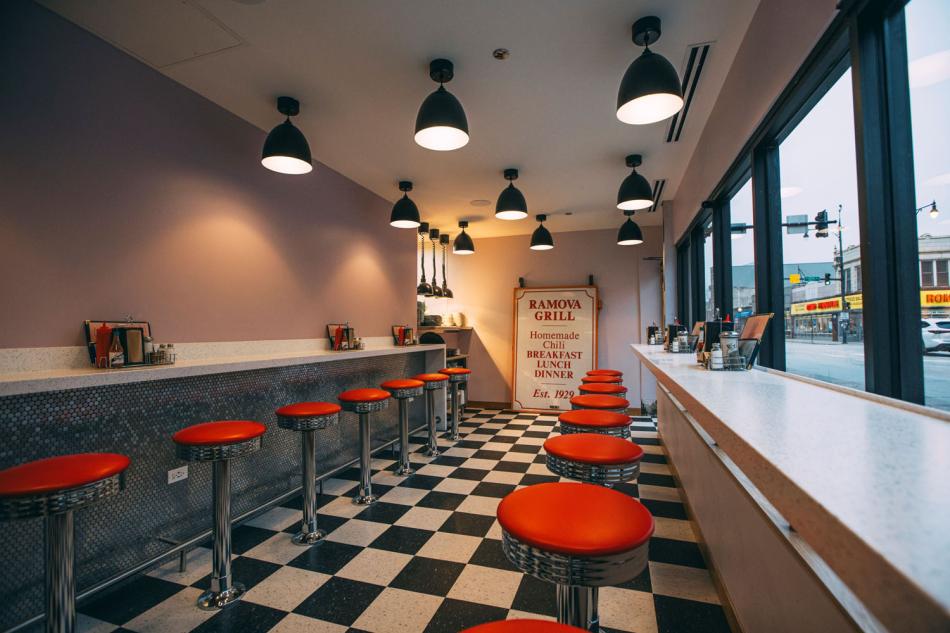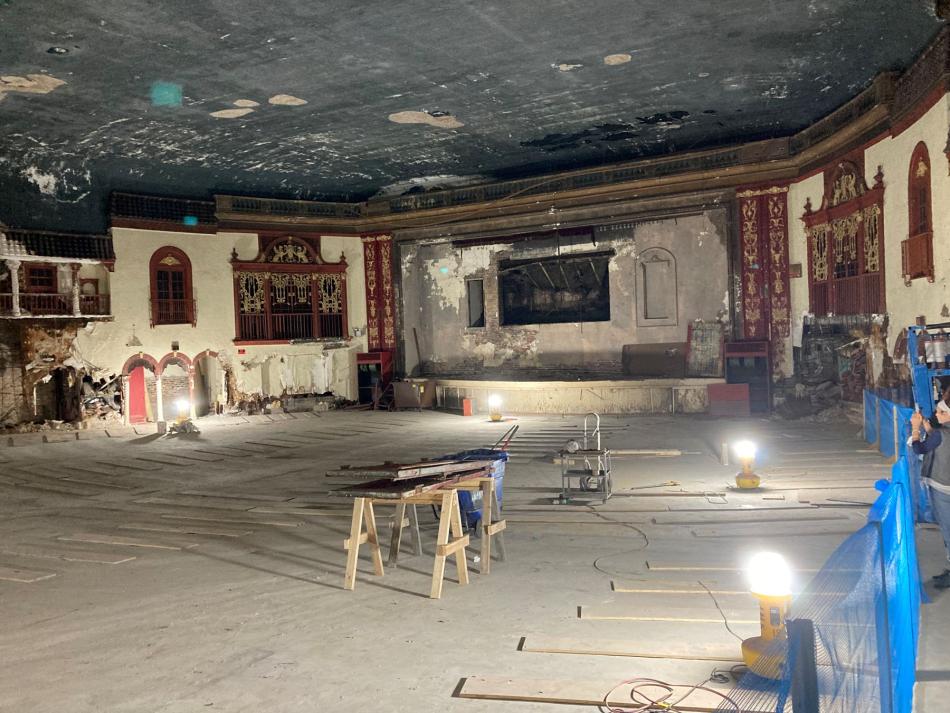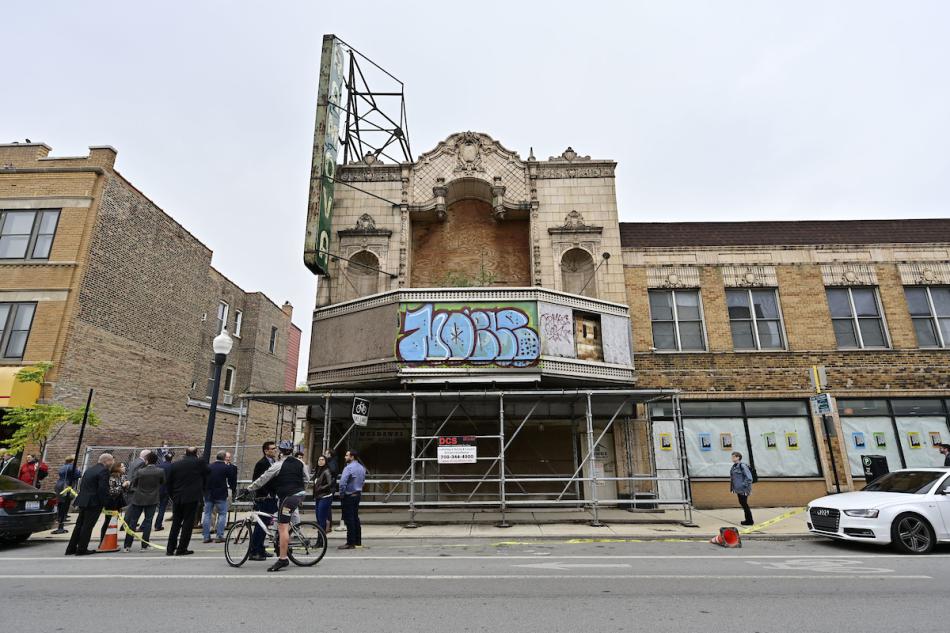McHugh Construction has announced that it has completed the $30 million adaptive reuse transformation of Chicago’s historic Ramova Theatre from a long-shuttered single-screen cinema to an 1,800-person concert hall in Chicago’s Bridgeport neighborhood. As part of the 36,000-square-foot project at 3520 S. Halsted, McHugh also built out space for Other Half Brewing, an independent craft brewery and taproom; Ramova Grill, an 18-seat diner; and Ramova Loft, a second-floor 200-person event venue.
Ramova Theatre originally opened at the tail end of the Roaring Twenties and quickly became the jewel of the Bridgeport neighborhood with its neon red marquee and Spanish-inspired architecture. However, decades later ticket sales slowed, leading to Ramova’s closure in 1985. After sitting dormant for nearly 40 years, Ramova’s historical and artistic significance was officially recognized with its addition to the National Register of Historic Places in 2021.
“When we first arrived on the site, it was like a time capsule, with the ticket booth still in place – even with the same curtains from the day it closed,” said Andrew Totten, vice president of McHugh Construction. “But it was in such a state of disrepair after years of neglect. Severe water damage destroyed large areas of the plaster ceiling, and the terracotta façade on Halsted Street was missing several parts.
“It was the exact type of complicated project our experienced restoration team loves to bring back to life,” he added. “McHugh has been around longer than the Ramova Theatre, so we knew exactly how and when to preserve, protect, rebuild and start anew, like when we took casts of the building’s remaining terracotta pieces and had them remade. We were honored to return the building to its 1929 glory and create a magical experience for the community once again.”
For more than two years, McHugh Construction worked closely with project architect O’Riley Office, Baum Revision and historic preservation specialists to meticulously restore the ornate architectural details in Ramova’s original Spanish courtyard-style lobby and auditorium.
Revived are the pale-yellow stucco-style walls, red-notched archways and columns, decorative bronze wrought-iron faux windows and balconies, a clay-tile roof line and a ceiling painted midnight blue – all evoking the beautiful and inviting hacienda ambiance, just like the day Ramova opened in 1929.
Gone are the velvety movie theater seats. In their place is a 22,000-square-foot barrier-free multi-level concrete floor in front of an expansive stage. While rows of spotlights hang from the ceiling, casting multi-colored glows throughout the concert hall, the venue’s new speaker system amplifies the onstage vocals and instruments, connecting artists with the audience. Multiple bars were installed in the back of the auditorium and a second-floor balcony was revived to offer clear views of the stage.
“The South Side of Chicago is home to the majority of local artists, but it has had the least amount of high-quality space for them to perform and hone their craft – from an aesthetic as well as acoustic point of view,” said Tyler Nevius, Ramova’s developer. “The city needed this and the South Side needed this.”
With an eye to attracting big-name performers, Ramova’s new greenroom is worthy of any A-lister, with four separate suites – each with full baths – and an office for tour managers to conduct business, noted Nevius. To protect artists from paparazzi and unauthorized personnel, McHugh created direct paths for touring vehicles to arrive, unload equipment and privately access the greenroom and performance area.
“Andy [Totten] and I talked with quite a few artists as part of the process,” Nevius said. “First and foremost, we wanted to create a place where they would want to come and perform. One that looks great, sounds even better and where people can enjoy a show in comfort, which meant a five-star air conditioning system.”
That required McHugh and its subcontractor teams to draw on decades of historic restoration experience to conceal state-of-the-art HVAC, electrical, sound and fire protection systems within the early 20th century fabric of the theater building. McHugh also tapped its in-house structural engineering team, McHugh Engineering Group, for expertise on structural modifications and additions to historic and complex structures.
“Having McHugh and its breadth of experience has been unbelievable,” Nevius said. “Multiple times we went to the McHugh office and worked on the whiteboard to understand how to fit everything into the venue. It was incredibly tight to shoehorn everything in while remembering what’s essential. For instance, it’s very important for the audience to have immediate and clear access to the bars and bathrooms.”
Staying true to its mission as a neighborhood gathering place, Ramova Loft, the 200-person venue on the second floor above the brewery and taproom, offers space for smaller performances by up-and-coming artists as well as events for local schools and community groups. The parking lot across the street from the building can also be used for community events such as farmers markets, and the empty lot adjacent to the south side of Ramova has been reimagined as a new outdoor beer garden.
The renovated Ramova Theatre grand opened on Dec. 31, 2023, with a 1920s-themed live performance of music and dancing to ring in the new year. The glitzy marquee once again lit up Halsted and 35th streets, and the auditorium’s atmosphere transplanted revelers to a grand Andalusian patio. The adaptive reuse project was funded by investments from the local populace, tax-increment financing subsidies from the City of Chicago, a state grant, and a Historic Places loan.





